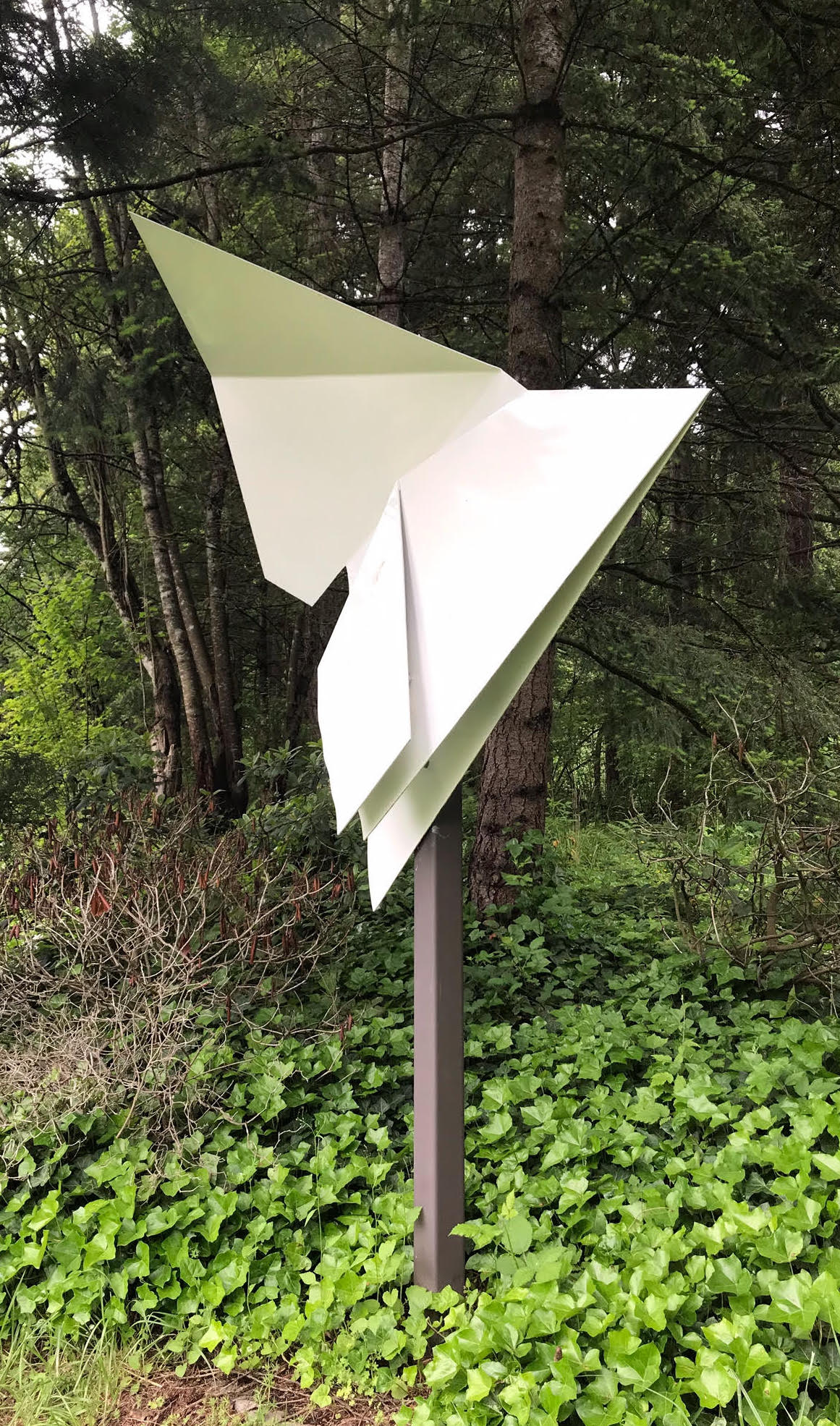
Whether it is making paper airplanes or dabbling in origami, most of us have explored folding. Take a thin sheet of paper and through a series of strategic folds, one can add rigidity while forming a 3D object. Albeit more abstractly and with less planning, this is essential what artist John Keppelman has done with this piece entitled Garapata. He is cutting and folding paper in what he describes as an automatic process — one without a specific intent. This method attempts to tap into the unconscious mind with the anticipation of finding surprising and interesting forms. Selected explorations eventually get translated into larger objects made of painted aluminum. The work is mounted to a dark brown post, intended to disappear into the landscape beyond, giving the impression that the piece is floating. Although, his pieces are obviously not meant to fly, the form and its position remind us of the paper planes we made as children and tossed into the air.
What adds to the drama of the work is the white color and the contrast it produces with the dark natural background. It is not only the color but the geometry of the work that adds to the obvious distinction between the natural condition and the human construction. Despite this juxtaposition, Keppelman’s inspiration for this construction was based on nature. Specifically, a location on California’s coast called Big Sur that he visited often as a young boy, a canyon with a river that emptied into the Pacific Ocean. Keppelman considers himself primarily a painter, which is why his sculptural works are curiously not to be viewed in the round. Many of these explorations in folding are intended to be hung on a wall or mounted to a post. They are intended to be seen from the front or side — like signs or paintings. Rather than using paint on this piece he manipulated the form to modulate the light on each facet.
